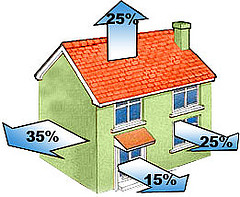A few weeks ago, I was speaking to one of our valued Developers, who had questions about the energy efficiency rating for apartments. It seems to be a grey area that is not clearly understood. With the new regulations coming into effect May 2011, I thought to write this newsletter to dispel some of the mysteries.
In the table below, I have simplified the current and future requirements of the BCA.
Energy Efficiency Requirements for Apartments for Classes 2 and 4 | Comments and application for insulation | |
Current Regulations BCA 2009 Section J0.2 | · Individual apartment to be not less than 3 stars · Combined average of all apartments to be not less than 5 stars · Services not required | · External walls to be insulated by minimum R1.5 · Wall insulation between apartments not required, only optional · Highest floor to be insulated by minimum R2.5 · Ceiling insulation between apartments not required, only optional |
From May 2011 Regulations BCA 2010 Section J0.2 | · Individual apartment to be not less than 5 stars · Combined average of all apartments to be not less than 6 stars · BCA Section 3.12.5.5, artificial lighting requirement to be 5W/m2 for living areas | · External walls to be insulated by minimum R2.0 · Wall insulation between apartments recommended minimum of R1.5 · Highest floor to be insulated by minimum R3.5 · Ceiling insulation between apartments recommended minimum of R2.5 |
Sustainability Tip
For building permit application, rainwater tank and solar hot water are not required for either the BCA or Building Commission requirement for class 2 and 4 buildings. However, they may be requested by Councils for planning applications as an ESD management requirement.
However, a rainwater tank or a solar hot water system is required for class 1 buildings (detached or units) as part of the Building Commission Practice Note 2008 – 55 requirement.
For further information, feel free to contact myself at Efficient Energy Choices, on 03 9390 2934 or via email at info@efficientenergychoices.com.au.
Share your feedback or questions....
Talk again soon,Karim Ghobrial
Electrical Engineer; Energy and Sustainability Consultant






